US$1000 + shipping
5 Stars
A mysterious, virtually unknown, totally passive preamp turns out to have star qualities
For a while, I thought that I might have to spend a lot of time and way too much money to find the right preamplifier. I’d tried a few units with high hopes but couldn’t quite get the right sonic balance. Then for some unknown reason, I decided to take a wild shot on a product from a brand that I’d never heard of. The story of how I ended up owning a StereoKnight Silverstone Balance Transformer Volume Control is to be found here, but after four months of hard use, the time has come to finally review this interesting piece of budget esoterica (as Gary Pearce likes to call high-end kit with low-end price tags).
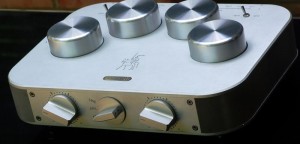
What we have here is a gorgeous and very exotic preamplifier with not one single, solitary active electronic component inside its aluminium and acrylic body. There’s a quartet of audio grade transformers, five switches, many wires and some input/output sockets. No capacitors, no integrated circuits, no valves, no relays, not even a power cord. Just those passive bits. The only active thing about the Silverstone Balance (SB) is its sonic magic.
Features and Construction
StereoKnight’s James Zhang has obviously kept things simple here. Take a hefty chunk of solid acrylic, machine it to shape opening up just enough free space inside for the essential parts and then sandwich it between two thick aluminium plates and you’ve got the makings of a tough, resonance free chassis. Bolt on equally sturdy slabs of alloy to the front and back for the controls and inputs/outputs and presto, you’ve got the SB. It’s hard to believe that a passive preamp can weigh in at over 10kg, but this is no featherweight filled with luke-warm slowly circulating air.
Because modern digital sources (and phono stages) provide plenty of grunt (voltage), a preamplifier is usually attenuating the source’s output voltage rather than adding any active amplification. So passive preamps exist simply because they’re able to attenuate voltage without needing active components. In reality, all the user really needs is a way to lower the overall volume and select their chosen inputs if they have more than one source.
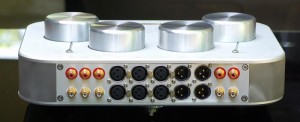
Unlike most passive preamps, which use a potentiometer to cut the incoming voltage from the source, the SB is a Transformer Volume Control (TVC), which obviously uses transformers to do its thing. This means that it suffers from none of the impedance-matching issues that plague potentiometer- based passives – you have to feel sorry for the poor old source that’s been hooked up to a conventional passive, as it has to drive the full length of cable from its output right through the passive pre, down the rest of the cable to the power amp’s input sockets. A mismatch here equals sonic misery, because the nature of the potentiometer means that the frequency range will be affected and possibly rolled off at different ends of the pot’s range.
A source hooked up to the SB effectively only drives the interconnect cables between it and the SB, while the SB itself has no trouble whatsoever driving the power amp and cables. In fact, the transformers make this a cinch. The more the incoming voltage is attenuated, the easier it is for the transformers to drive the power amp. They even have the ability to passively provide 6dB of gain, which can be accessed by the switches on top of the unit, which gives the SB additional flexibility when dealing with sources that provide lower than normal voltages.
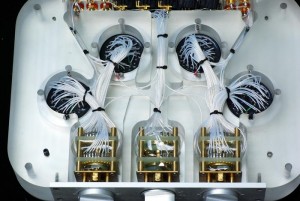
The internal wiring is Teflon coated copper and the transformer windings are copper, although there is an “ultimate” silver wound upgrade available. Three RCA inputs are provided, along with three balanced XLR inputs. There are two RCA and two XLR outputs. Source selection is handled by a central three way rotating switch, while volume is controlled by two thirty-three position stepped attenuators. With four transformers and the dual volume knobs, this is a dual mono design using one attenuator per channel, which of course gives full balance control. The SB can also take a single ended input and change it to a balanced connection to the power amp or balanced from a source with single ended to the power amp if required. The stepped attenuators offer a wide range of volume adjustments with quite small changes in level at each step. This is ideal because it makes it easy to get the perfect volume level or to balance levels as needed. I’ve used a unit with twelve steps on the volume control, and this was too coarse to be useful.
As I’ve said, the SB is a looker. It’s futuristic yet retro at the same time. Construction quality is very good and while the overall finish can’t match the best from Japan, it more than suffices, especially when the price is taken into account. The only jarring visual elements are the gold isolation feet, which also serve to lock down the bottom plate. They come with pointy screw-in spikes, which work very well to stabilise and isolate the SB, but ideally they’d be silver-plated or satin-brushed to match the rest of the aesthetics.
Delivery and the Vagaries of the Courier Companies
While StereoKnight is based in Tennessee USA, the company’s products are made in China and my SB was sent from China via Hong Kong – there’s no New Zealand agent, so I dealt directly with James at StereoKnight. Shipping was reasonably quick but the SB arrived with one of the attenuator switches damaged, thanks to some abuse on the way. In truth, the packaging was a bit light for a 10kg product, but James assured me that mine was the first unit to be damaged.
These are the perils of importing stuff yourself, although the same thing can and does happen to products sent across New Zealand or indeed, across the city. Dealing with couriers is often a case of “do you feel lucky, punk?” In any event, James was more than helpful, and the faulty SB was sent back to the factory in China using a different courier company (EMS). It was fully repaired and sent back in a matter of days, again with EMS doing the driving and flying. With sturdier packaging foam in the box, it arrived in good nick and went straight into my system.
Sound Quality
When the SB first arrived with one channel dead, I just had to hook it up and listen in mono. To say that I was impressed is an understatement. As I put it in my blog, the sound “just about rewired my brain”. The fully working unit did much the same.
The system in question is made up of my Marantz SA8260 SACD player, Viganoni and Viganoni Sachem three box power amps, Theophany M5 Series 2 loudspeakers and Slinkylinks cables. The vinyl source is a Well Tempered Simplex with a Dynavector DV20X-L moving coil cartridge and Dynavector P75MkII phono stage in phono enhancer mode.
The first thing that’s apparent is the noise floor or simple lack thereof. While waiting for a song to start, it’s easy to think that that power amps are in fact powerless, while the quiet patches between tracks are as vacant as a dark, empty warehouse. This leads directly into the SB’s next obvious trait – it has as delicate and light a touch with music as anything I’ve yet heard with these components. The combination is more transparent and revealing than any other amplifier I’ve had at home. The ability to resolve low level detail has improved by leaps and bounds over previous preamps and at all times, it feels as if I’m hearing more (a lot more) of the music. Quiet intros and fade outs are clearer and more obvious while every little sonic cue from the decay of an acoustic guitar in a room to double miked vocals or multi-performer harmonies just seem to be easier to pick up and follow.
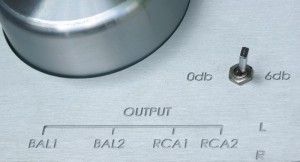
Vocalists are now as intimate and immediate as if they were plugged right into the speaker drivers. Textural and tonal information is so easily accessible that I wonder how I ever did without this level of insight – the way a singer shapes their voice, the touch of fingers on a guitar string, the many sounds involved in the strike of stick on drum skin. It’s almost as if there was a hidden control at the back of the system marked “opacity” and this control has been turned from four (not bad) to zero (bloody good).
So just as expected with a passive preamplifier, there’s reams of resolution and the eerie feeling that the source has completely bypassed the preamplifier. Which is all very well but with a set of accurate (some would say lean) power amps, I was concerned that I’d end up with a cold and dry presentation as per the Usher preamp that proved a less than ideal match in my system.
Then there’s the other passive preamp worry– restrained dynamics. In theory, active equals slam and passive equals snooze. As someone who values, even treasures sheer speed and dynamic eagerness, I was more than a little concerned.
My anxiety over these issues lasted all of a few hours. An initially subdued dynamic presence was quickly banished and the SB proved capable of passing almost all of the transient speed and attack from source to the power amps, which I’ve always found to be able to grab music by the scruff of the neck and make it dance and surge.
With the SB in place, drum shots hit hard, guitars shimmer and rage as appropriate and vocals rip from silent to ecstatic and back again. Even low level listening retains a fair amount of the dynamic integrity but the sound is so clean that I’m always listening at higher volume levels than I used to, which is where the sound seems to fill out and bloom properly. There’s a little more drive to be had from the active preamps I’ve used, most notably the Yamaha, which is a star at provoking life and energy from the Sachems, but the SB isn’t that far behind.
The bass speed is as good as I’ve ever heard from my speakers and for some reason, they seem to be reaching subjectively lower. I’ve never felt the need for any more weight in this room but it’s there and without any boom or looseness.
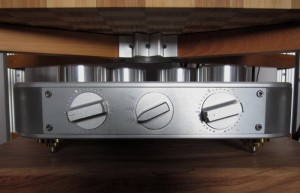
As far as warmth goes, this sound isn’t what you’d call romantic or rich, not at all. In fact it’s perilously close to the lean side of the equation but the system is now exceedingly faithful to the recording. As I pointed out in my blog here “thin recordings sound thin, bight recordings are bright, while horribly compressed recordings are just bloody horrible. On the other hand, recordings with a rich, warm acoustic are as warm as anyone could want, with a deep resonant character that seems to be entirely in keeping with what’s on the CD or record.”
Still, the sound is not cold or uninvolving; just the opposite, in fact. I can’t stop my feet tapping to the beat when I’m listening, which is after all, the point of the exercise. This isn’t a cerebral pursuit, I want to be connected, hooked up, locked in. If my mind drifts and the music becomes background, then it can just as easily drift in the background while I listen to a $99 iPod speaker, and my hi-fi investment can be put into a jetski or motor bike or something equally involving.
The biggest issue I had with the SB was a strange effect on vocals, which were widely spaced across the soundstage almost as if the speakers were connected out of phase (they weren’t). The instruments however, were placed correctly in the right places. It took a while to sort this out but it turned out to be a synergy issue and nothing more – the full story of this frustrating exercise can be read here but once I resolved it, I couldn’t be happier with the imaging and sound staging considering the room’s limitations. The performance is placed behind the speaker plane with a good sense of depth and enough width.
Conclusion
Despite appearances, I’m not brand loyal. Show me a better way to do something in life or in an audio context (without getting carried away financially) and I’m there. So the fact that the Marantz SACD player, Theophany speakers, Slinkylinks cables and Sachem power amps have been in my system for years is explained by the fact that I haven’t found anything to better them without beating up my bank balance at a cruel and unusual level. Sure I could drop in a set of Magico V3 floorstanders, a high end DAC, a better cartridge or a full loom of Vitesse Audio cables and I’d be well ahead of where I am now but that’s not an option (my very real world bank account tells me so).
I preferred the Sachem power amps with the Yamaha A-S2000 integrated amplifier used as a preamp combo over Perreaux’s Eloquence 250 integrated, and the sublime LFD LE Integrated MkIII, so imagine how I feel now.
Component matching and system synergy is a critical factor with the SB. It always is to some degree but here, the preamplifier doesn’t seem to be adding or subtracting anything between source and power amp. If your current preamp is throwing in a dose of warmth, or artificially pumping up the low bass or even mellowing out the high end, then be sure that you’ll notice the change when the SB is placed in your system. You also might not really like your source after all.
Make no mistake, I got lucky here but the speakers, source and power amps have displayed a pronounced synergy over the years, so I wasn’t all that surprised that the SB was a good fit. I am shocked at just how good that fit is though. Shocked but happy. I’m absolutely convinced that I’d have to spend a lot more money to better the performance of the SB – way too much to make the search at all viable or even worthwhile. At the SB’s price, it’s hard to imagine a better audio buy, assuming you can live with being at the end of a long and possibly tenuous courier based tether to the support and repair infrastructure. ASHLEY KRAMER

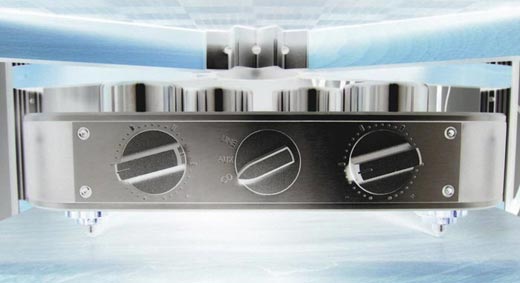



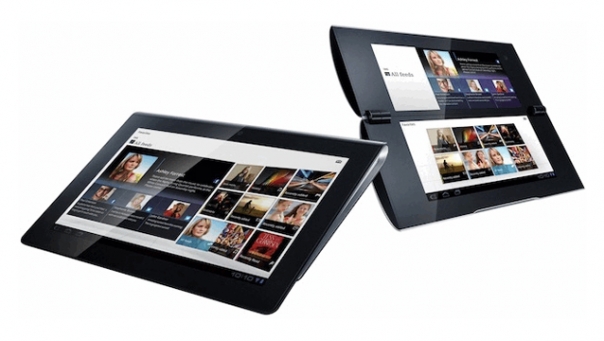
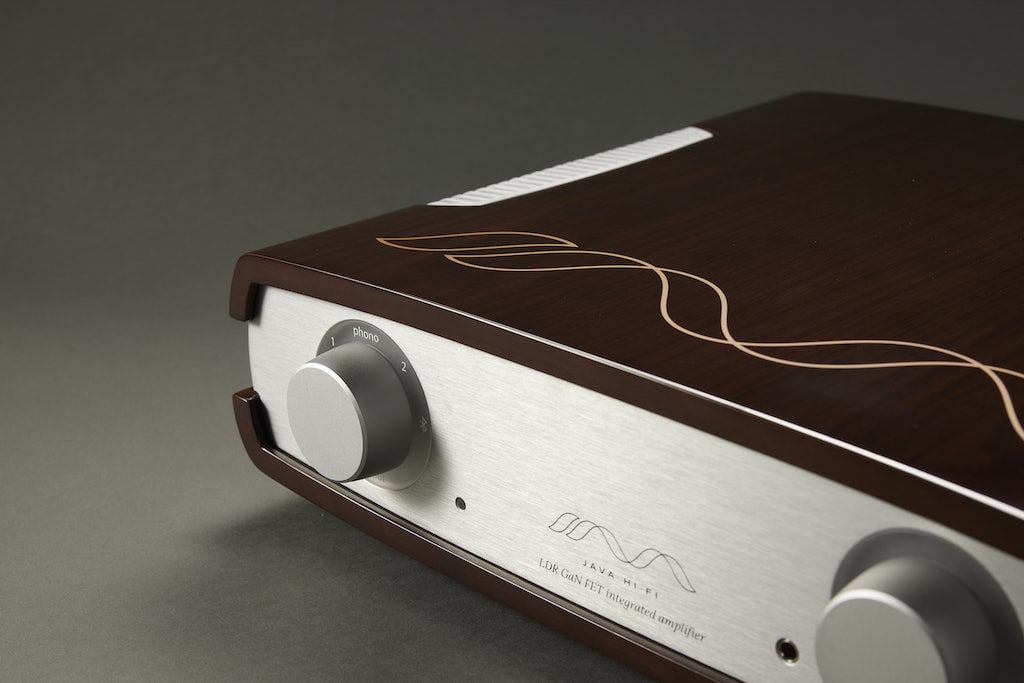
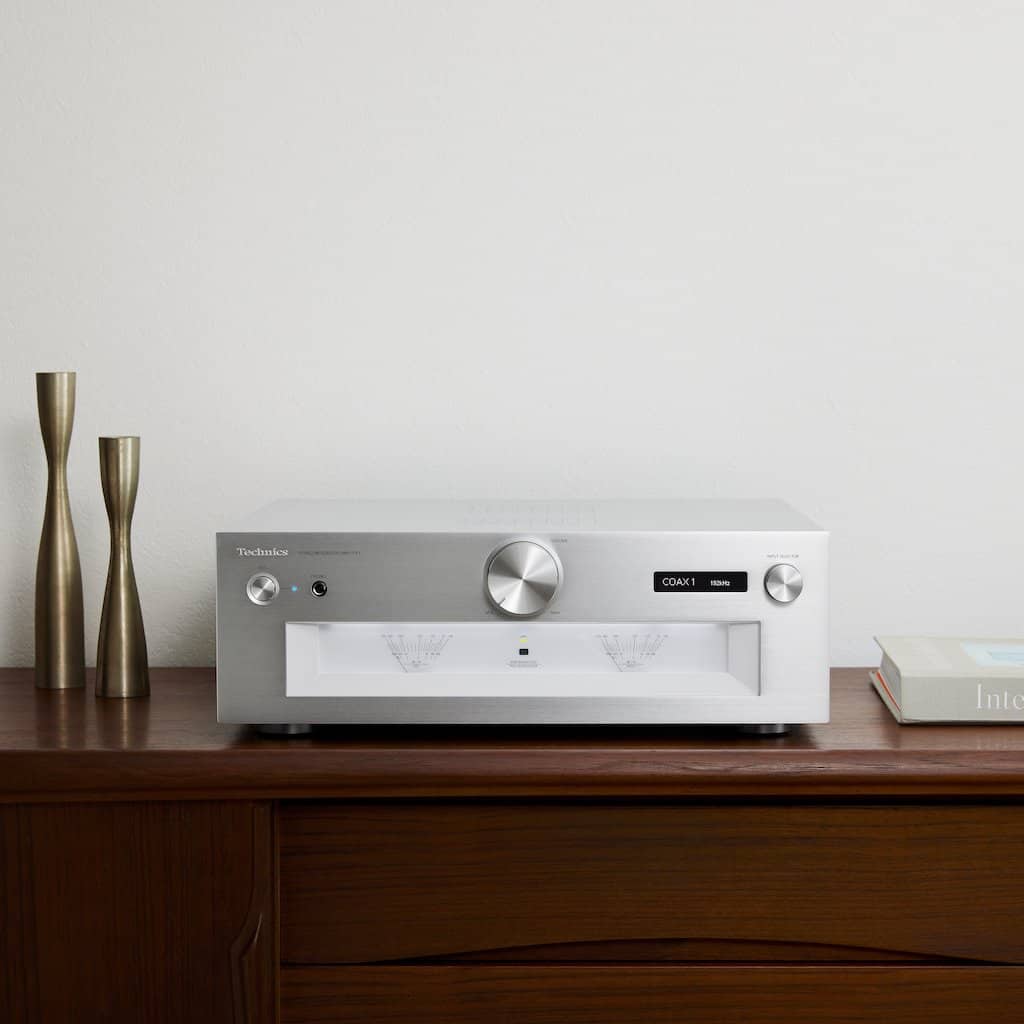
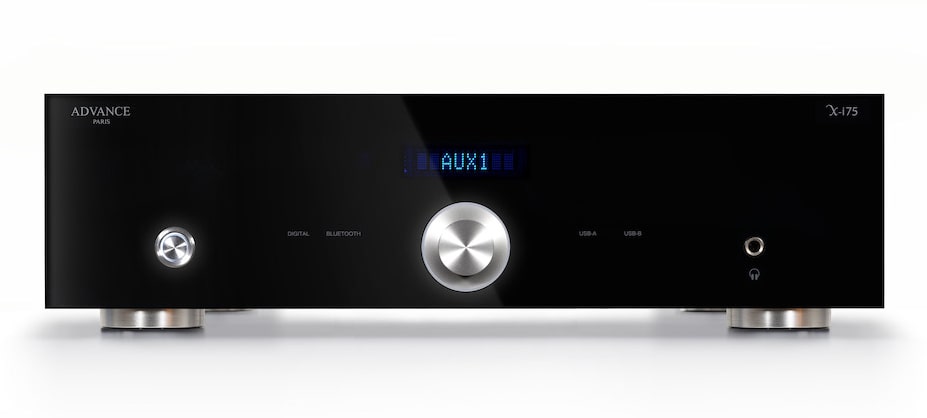

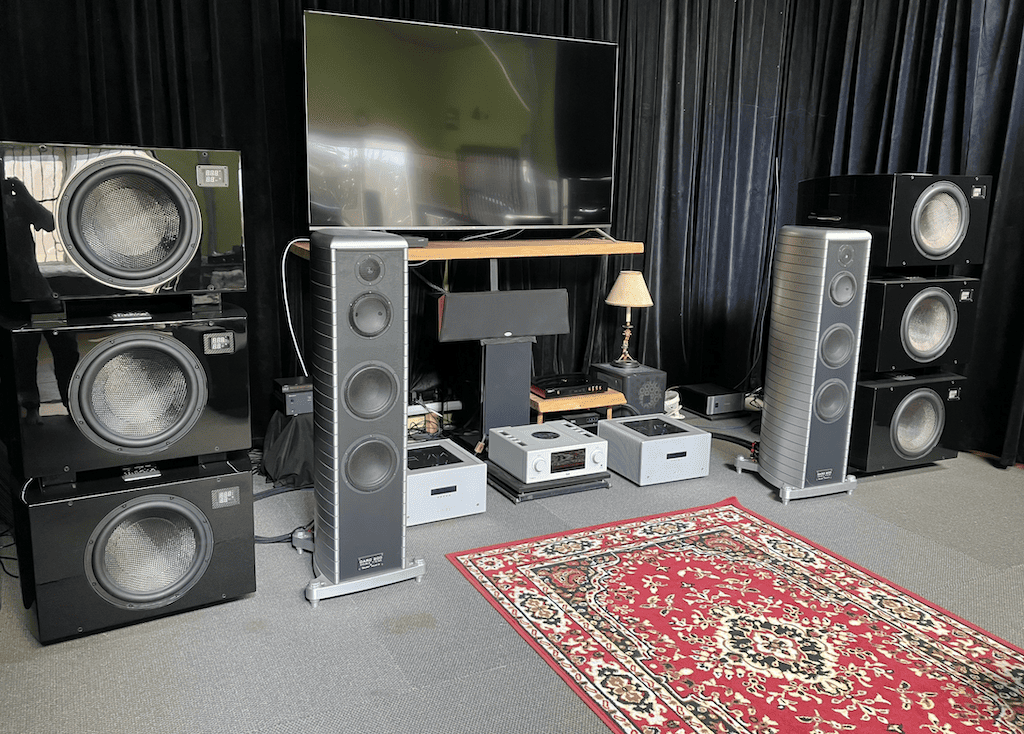

Cool article Ash! Clears up some questions I had re passive pre amps. I don’t normally go for Hi Fi that looks unusual but in this case I quite like the aesthetics.
The best description of an amp that I ever read/heard was “A straight wire with gain” and this little number seems to fit into that category quite well.
Great value too!
Craig
Hello Ash, I reacted to your december 2010 introduction of this beautiful piece of audio gear. I also pointed to the 6moons review then. To be honoust, I didn’t know what to think after reading Srajan’s writing. He has the same Weiss DAC2 that I have (and a Mac with AIFF music). I don’t have a pre-amp, as is suggested (my only other source is the Emotiva ERC-1 CD player, via coax digital). But I need to do a lot of attenuation on the DAC2, which is in the digital domain and thus potentially degrading the sound quality (it’s like zooming in into a digital photo). Transformer volume control on the other hand, loves attenuation, the more the better! I love what you describe: this pre-amp presents the music as intented. I am still in doubt whether to add one or stick with the DAC2 only. That US$ is now very low versus my euros, though! Can you clear one thing? You need to change both volume controls separate, not? I mean, they’re not connected, ofcourse? This is very tempting. If I get this, I can connect my Project turning table to my stereo, instead of to the surround system. Do you happen to know the price of the remote version? Thanks from Erwin, Belgium, EU.
Hi Erwin
The two volume controls are separate, which gives you balance control as well. I’d say it’s worth a try – the supplier offers a money back guarantee but I’m sure you’ll be able to sell it if you don’t like it. Can’t see why though…..this preamp really does just get out of the way.
Are Stereo Night in business? If so, they should reply to emails that are repeatedly sent, it would help business and their own image
Looks like they’ve gone out of business:
http://www.osbornloudspeakers.com.au/stereoknight/skmain.html